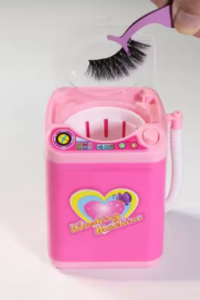Introduction:
conservator washing machine,In the realm of household appliances, the washing machine reigns supreme as one of the most essential and frequently used devices. Whether you’re a family of five or a single dweller, your washing machine is likely a hub of activity, tirelessly cleaning clothes day in and day out. However, like all machines, it requires care and attention to keep it running smoothly. In this comprehensive guide, we’ll delve into the nuances of maintaining and optimizing your conservator washing machine for peak performance and longevity.
Understanding Your Conservator Washing Machine:

Before diving into maintenance tips, it’s crucial to understand the workings of your conservator washing machine. These machines come in various models and designs, but the basic principles remain the same. Inside, you’ll find a drum for holding clothes, a motor for powering the drum’s rotation, and a control panel for selecting cycles and settings. Additionally, modern conservator washing machines often feature advanced technologies such as energy-efficient modes, steam cleaning, and smart connectivity.
Maintenance Essentials:

Regular maintenance is the key to ensuring your conservator washing machine operates efficiently and lasts for years to come. Here are some essential tasks to include in your maintenance routine:
Clean the Drum: Over time, dirt, grime, and detergent residue can accumulate inside the drum, leading to unpleasant odors and reduced cleaning performance. To combat this, run an empty cycle with hot water and vinegar or a specialized washing machine cleaner at least once a month. Additionally, after each laundry load, leave the door or lid ajar to allow the interior to dry fully and prevent mold growth.
Check and Clean the Filters: Many conservator washing machines feature filters that trap lint, debris, and foreign objects to prevent them from clogging the drain pump or damaging the machine. Regularly inspect and clean these filters according to the manufacturer’s instructions. Failure to do so can result in drainage issues and potential damage to the machine.
Inspect Hoses and Connections: Leaky hoses and loose connections can spell disaster for your conservator washing machine, leading to water damage and costly repairs. Periodically inspect the hoses for signs of wear, cracks, or leaks, and replace them immediately if necessary. Additionally, ensure all connections are tight and secure to prevent leaks and water seepage.
Balance the Load: An imbalanced load can cause your conservator washing machine to vibrate excessively during the spin cycle, leading to noise, wear, and tear. To avoid this, distribute clothes evenly inside the drum and refrain from overloading the machine. If necessary, use a spirit level to ensure the machine is sitting level on the floor.
Maintain the Exterior: While it’s essential to focus on the internal components of your conservator washing machine, don’t neglect the exterior. Wipe down the control panel, door or lid, and exterior surfaces regularly with a damp cloth to remove dust, dirt, and fingerprints. Avoid using abrasive cleaners or harsh chemicals that could damage the finish.
Troubleshooting Common Issues:

Even with regular maintenance, you may encounter occasional issues with your conservator washing machine. Here are some common problems and troubleshooting tips:
Excessive Noise: If your conservator washing machine is making more noise than usual during operation, it could indicate an unbalanced load, loose components, or worn bearings. Check the load for balance and tighten any loose parts. If the noise persists, consider contacting a professional technician to inspect and repair the machine.
Drainage Problems:
Certainly! Drainage problems can be a significant issue for homeowners, causing water buildup, flooding, and potential damage to property. Here are some common drainage problems and potential solutions:
Poor Grading: Improper grading around your property can lead to water pooling near the foundation or in low-lying areas. This can eventually seep into basements or cause erosion.
Solution: Adjust the grading so that water flows away from your home. Fill in low spots and create gentle slopes directing water towards appropriate drainage areas like ditches or storm drains.
Clogged Gutters and Downspouts: Leaves, debris, and dirt can accumulate in gutters and downspouts, preventing proper water flow and causing overflow or backups.
Solution: Regularly clean gutters and downspouts to ensure water can flow freely. Consider installing gutter guards to reduce debris buildup.
Sump Pump Malfunction: Sump pumps are designed to remove excess water from basements or crawl spaces. If they malfunction or fail, it can lead to flooding.
Solution: Test your sump pump regularly to ensure it’s working properly. Consider installing a backup battery or generator to keep it operational during power outages.
Poorly Functioning French Drains or Drainage Pipes: French drains and other drainage systems can become clogged or damaged over time, leading to ineffective water removal.
Solution: Inspect and clean drainage systems regularly. Repair or replace damaged pipes or drains as needed.
Compact Soil: Soil that is too compacted prevents water from being absorbed properly, leading to runoff and pooling.
Solution: Aerate compacted soil to improve drainage and water absorption. Consider adding organic matter such as compost to improve soil structure.
Lack of Proper Landscaping: Plants and landscaping features that inhibit water flow or encourage pooling can exacerbate drainage problems.
Solution: Choose plants that are suited to your soil type and climate, and consider creating swales or berms to redirect water flow away from problem areas.
Inadequate Stormwater Management: In areas with heavy rainfall or poor municipal drainage systems, excess stormwater can overwhelm properties.
Solution: Consider installing rain gardens, permeable paving, or dry wells to manage excess stormwater on your property.
Addressing drainage problems promptly can help prevent costly water damage and maintain the integrity of your home and property. If issues persist or are severe, consulting with a professional landscaper, drainage contractor, or civil engineer may be necessary.



2 thoughts on “conservator washing machine”